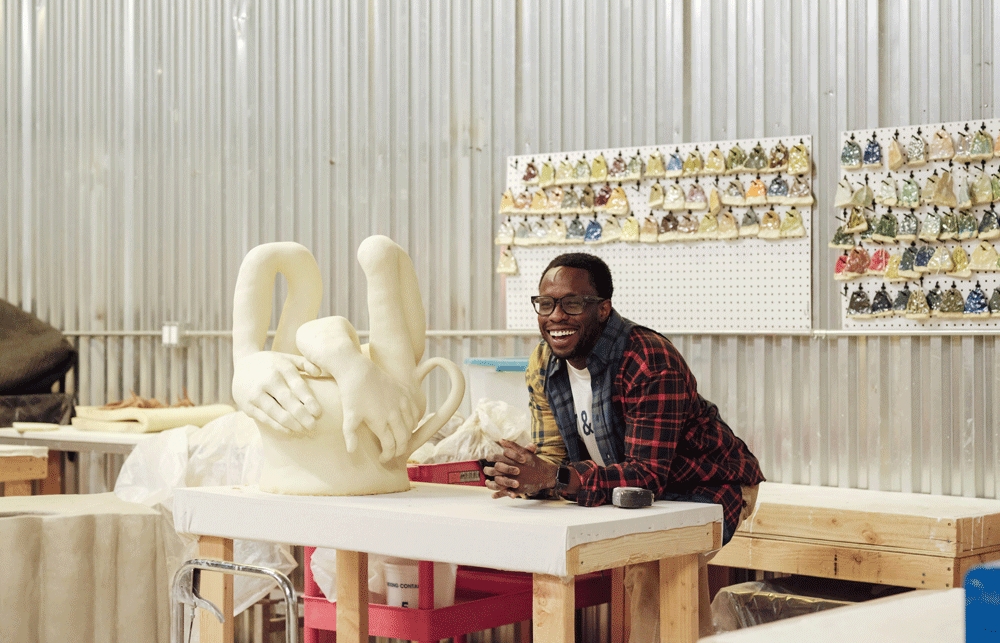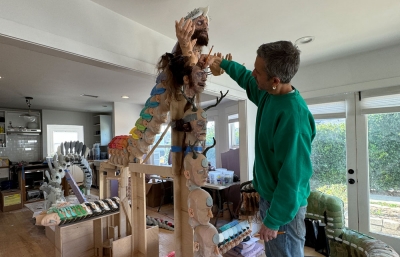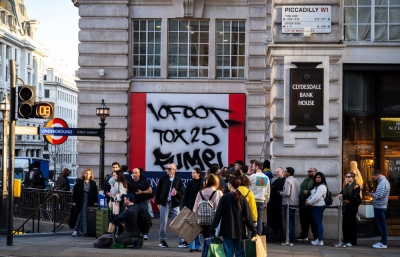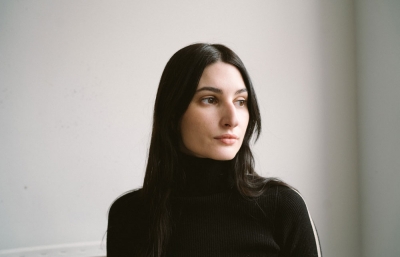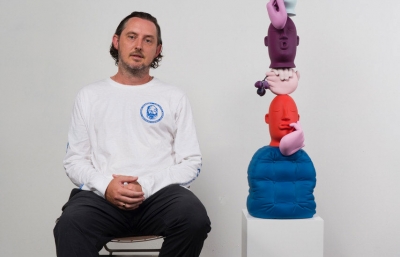Woody De Othello
Flash of the Spirit
Interview by Kristin Farr // Portrait by Channel Stone
In the midst of a revelation, Woody DeOthello is awe inspiring. Through his hands, inanimate objects vibrate: Lamps laugh at light switches and telephones might lick your face. Optimistically breathing life and joy into stillness, his practice churns like a steam cloud from a whistling kettle, and he’s now realizing what he’s been conjuring all along—righteous magic. In his studio, a day after his inclusion in the Whitney Biennial was announced, magnificent glazes and new forms dominated. Othello’s air was charged, and he was nearly outside of himself, riding this lightning energy.
Kristin Farr: Thanks for doing the interview on short notice—deadlines!
Woody De Othello: I’m always in the middle of a deadline and pushing it down to the wire.
I love this quote: “The pressure is good for you.”
It happens on all levels. I was watching this Quincy Jones documentary and they were talking about Michael Jackson and producing Thriller in two months. That’s crazy! Just high-speed the entire time. Sometimes, in a time crunch, something really magical happens where you can’t process or think, you just gotta react.

You’re prolific and everything’s coming out magical. The demand is good for you! We’re both laughing right now, so let’s talk about why humor is important.
Humor helps us deal with all the hard shit going on. It’s a way to heal and process what’s going on in the world. When you’re able to laugh at something, it shows that you spent time with it. You’ve gone through the mourning, you’ve gone through whatever grief has happened, and you’re able to shed a little bit of light on something that must’ve been traumatic or hard to go through.
It’s also just my personality. I’m joking 80% of the time, so it comes out in my artwork, whether I like it or not. In the studio, if I start laughing at something, or I have an idea where I think, this is either going to be the best thing possible, or it's gonna be corny and bad—I normally go with that impulse and make that thing. It’s just something very natural to me that might be a defense mechanism, but it’s a way to deal with what’s going on with a little bit of lightness and grace.
So you’re from Miami? But your soul was meant for California.
I feel like I’m a California kid at heart. I know I’m not leaving the state. I’m here for life.
Good! Thanks for not moving to New York.
Why would I do that to myself? There’s snow, and less nature… and there’s snow! California is a beautiful state. Being able to explore, camp and hike—it does feel like home. My parents have realized I’m not coming back to Miami, and I’m here for the foreseeable future.

You’re already a legend among an influential history of Bay Area ceramicists. Why are ceramics your main squeeze?
My friend in undergrad said, “Yo, you should take this ceramics class, it will be cool to see the stuff you’re making in 3D.” Something just hit me. It just made sense. I had an expounding amount of questions and things that I wanted to make, and I’m still continuing on that first path. It’s something that I didn’t seek out. It’s something that found me, and I’m fortunate it happened when it did, and that I had the mental fortitude to stick with it—because the first two years I was making ceramic work, it was a lot of failure. Things weren’t coming out, they were exploding, but I was so fixated on shaping the clay with my hands.
Getting into clay early on, and learning about the history—everything pointed to California. It made sense to find a school out here when I decided to pursue my MFA, so I could embed myself in some of that history, or be as close to it as possible.
I remember the first time I flew into San Francisco, there was a huge Viola Frey ceramic mural in the airport, and I was like, this is crazy! The second you land here, you start to see some of the roots of ceramics in the Bay.
The airport’s collection is rad—including your work!
The collection there is just out of this world. They have a spot for the Mission School artists and professors I know from CCA, like Kota Ezawa. When I landed, I really spent time walking around and looking at art. I didn’t have an itinerary, so I ate up as much time there as possible. I was fascinated, and it’s surreal to be part of that collection now.
Your sculptures at the airport are cast in bronze—what do you like about working with that material?
At that time, I had never worked in bronze and didn’t know if my work would translate. It was similar to when I first started working with ceramics and seeing the potential of working at that large scale. I’m able to make things that are larger than life, or larger than the audience’s body when they interact with the piece, and that opened up the bronze part of my practice.

Bronze can look like ceramic.
That’s the awesome thing about using bronze and the process of enlarging a sculpture. You take a mold for the bronze, and it carries the same energy as the ceramics. That wonkiness, that slacker vibe that exists in my ceramics, is transmuted into bronze casting. When that big fan sculpture debuted at Basel, everyone thought it was ceramic. And I was like, ok, one—I don’t have a kiln that large! And two—I don’t even know if I’m capable of making something that large in ceramic. I’m not too sure it would survive.
I’m the biggest fan of the big fan! You’ve mentioned being anxious when it debuted.
I was like yep, I’m done. This is it. I fucking failed. Everything else at the fair looked like art and I made a big old yellow school bus-looking fan. I can’t even put into words that feeling of being there at opening night in Miami, in this art fair. I had shown work before, but prior to that, I was always on the outside looking in. Before I started working with Jessica Silverman Gallery, I never went to the actual convention center. Art Basel, and that side of Miami Beach—I never spent time there before, and for that to happen there was one of those things I could only dream about, up until then.
It was such a hit! The fan, Cool Composition, has multiple interpretations, like the concept of breathing.
It’s extremely open. A lot of my work is situated in this interior, domestic realm, and how we anthropomorphize the space that we’re in, or the objects we interact with. I think of the home as this living being, and how it circulates air. Windows, air conditioning vents, air purifiers and fans circulate air through our living spaces, so that’s where the original idea came from. Plus, it’s an interesting object to humanize and add that personification. And, previously unbeknownst to me, there’s been a lot of conversation about these loose ideas of climate change.
I’ve been learning about this African religion, Yoruba, and there’s something that I’m really taking on. It’s about giving life to things around us, giving life to the everyday, so that’s a huge part of my thinking with domestic objects right now. It’s almost using the Surrealist approach, where you take something and humanize it, and it gets you to challenge the everyday. My favorite thing about the Surrealist movement is shaking up these things that we take for granted that we see, day in and day out.
It’s almost like cloud gazing. When you look at a cloud and you start to find different shapes—that’s a hard plane to exist on and see the world from. I’m hoping that, with the painting practice, I’m able to melt or diffuse things in a way where two things can be true in one thing. A faucet could be a light fixture or a shower head, or a vent could start to look like a rib cage. That painting language is starting to make itself known in my sculpture practice.

The paintings collapse space, creating a new realm. Tell me about using live plants in your work—are you particular about the type?
I’m taking care of plants at home now, and I’m not the best plant caretaker, so I know which ones are a little more resilient. When I’m making drawings, I’m referencing stuff in my house, but I’ve been thinking about palm trees. They remind me of living in South Florida, but they’re also super tropical. Palm trees are a sacred plant in the Yoruba religion; they made palm oil. So the plants in my work are a metaphor for taking care and giving life. When I’m stressed out and not spending as much time at home, my plants start wilting away. It’s this idea of paying attention to your surroundings and space. The care-taking component of living with plants started to make its way into the paintings. I don’t want to say they’re a metaphor for a figure or a human presence, but it’s something alive in the work. I like that dichotomy of having these still, ceramic objects that are not going to move, but having something that changes implemented with them.
I recently adopted some plants and was surprised by their needs. They’re not easy.
They are not easy, and they’ve made me pay attention to what’s going on outside, the seasons, the weather, and so many different factors that I wasn’t aware of. It’s almost like having a dog, and they make you aware of what’s going on at another level. Plants have the same kind of capacity.
What else about Yoruba has been resonating with you?
There’s this humanist thing, at least for me, when I’m personifying objects, that opens up the potential for another conversation. My work is very figurative without having so much information about the figure present, which creates this space for more emotion and psychology to be explored. It’s a more nuanced conversation when you’re looking at an object that’s moving, with this posture and color to it, and trying to understand the psychology of this inanimate thing—it’s a very conversational space to be.
Do different colors have varying significance?
I’m really into orange right now! It’s a life force. I love wearing it. I love seeing it. It’s a happy color, and it’s deep and rich. There are so many things you could do with it. Colors communicate emotion. I’m one of those people who almost never wears all-black. I feel like it’s spiritual; you wear that when you’re mourning. I love wearing color. It literally brightens up my mood and how I move through space. I just love bright colors and the combinations between purple, reddish pinks and orange.

You always transform a gallery to be immersive and colorful.
I’m trying to give the work as much context as possible, with the stools, and all the options I have for displaying the actual sculpture. In graduate school, I was making sculptures and putting them on traditional pedestals, and it would kill the energy. It’s important to give the work as much context and enough space for it to exist on its own. That default white gallery space takes away the energy from my art, personally. So I’m actually about to be a headache of an artist! It’s like building more agency to it, building more confidence in making work, and more confidence in myself and my vision.
The immersive impact is worth it. The stools and chairs have a good origin story, right?
It was completely by accident. I was in graduate school and was approached by some friends putting together a play at a theater company in Berkeley. They really wanted ceramic chairs, and I thought, you’re trying to move ceramic chairs around? It didn’t make sense to me, but I made them anyway. My friends tried using them but realized it would be a hassle, so I just had these ceramic stools and chairs in my studio.
I still remember the sculpture, Faceless Face Jug, and I looked at the width of the base, and the width of the chair, and I was like, hold up! These two might go together! The sculpture fit perfectly on that theater chair, and that changed everything. If I had to name one piece that transformed or set my practice on this current trajectory, it is that sculpture.
I wish there was a better term for “happy accident.”
That’s when luck meets opportunity. When you have opportunity, and you have the resources around, and you’ve been doing the work, something serendipitous happens. With the energy that we put out, and the energy that we hold to ourselves, there’s a way we can conjure those happy accidents. Working on tight deadlines, too, you don’t have time to react to something. You have to let your spirit and intuition take the wheel, and you have to trust in that journey and that process.
Your work is both accessible and speaks about the idea of accessibility.
Looking around at the world, and choosing and recreating objects that people may or may not have a relationship with, but making art that somebody super young could access, or somebody older could also access and think about… I’m not from a traditional art background, and my parents are from Haiti and hella working class, so it’s important to be able to show my family this stuff, and for them to be able to have interpretations about it. I don’t want to start referencing things that are solely art historical.

You provide many doors into the work.
It’s all metaphorical. We hear these clichés all the time, and it’s a part of me living life and having faith, and trying to tap into a source that’s outside of myself. Growing up and hearing things like, “God closes one door to open another,” of course I’m gonna use a doorknob to reference that! I think about day dreaming, or having a positive mindset and outlook—that window—is a reference to having this optimism. A ladder is a way of working up and continuing to climb. Even though some of the objects have a depleted look, all these things have this underlying optimism that I’m trying to communicate as well.
I always ask artists if they feel something outside of themselves guides their work.
Every person who makes something—it comes from ourselves, but we’re tapping into a larger source and history of making and expressing. I’m not doing this on my own. I don’t even have words for it, but I can feel that sensation that something beyond myself is driving this energy of making, and it’s also being tapped into community and seeing other creative people around me making things. All of us are in this together, and we’re these antennas that feel what’s going on in the world. We have a thousand different ways that we make something, but there’s so much overlap in what we’re trying to communicate.
Tell me about these blue tiled platforms you made for a museum show.
It’s another way to create more context. I have a vision for a future show where the entire museum floor is tiled with custom-glazed ceramic tiling. I’m working on another project with an orangey-amber tile, and different objects situated and resting on top.
I wondered if they referenced a familiar floor.
No… it’s a fictional floor. But all this stuff does reference my personal history. It’s coming from a place of experience. You know, my folks had carpet when I was really young, but I was having crazy allergies, so they ripped out the carpet and we always had this super dark black tiled floor in my house. So that’s something that is floating around in my mind when I think about my childhood. Maybe it comes from there, and I just now pieced it together when you asked me.

I hoped that would happen. This is like a therapy session now! Are you starting any new explorations lately?
Everything is building on top of each other at this point. Again, I’m really interested in Yoruba right now. I don’t know how it came to me. I actually read one book, Flash of the Spirit, and it kind of unlocked all these other books, which are helping me to understand the inclination or the intuition I had to anthropomorphize these everyday things. Right now I’m reading a book called Vigilant Things, about this type of Yoruba object that’s imbued with spirituality. They take random things, like a corn cob, or an old shoe, or the straw from a broom to make these makeshift sculptures, but they’re also protectors. So they make this ensemble of found objects, and they place it on a stack of wood, or something they don’t want to be stolen—like a sign saying, “If you take this, something will happen to you.” So that impulse that I’m learning about seems like a very similar impulse that I’m following with my art-making. If anything, I’m just trying to learn more and solidify the intuitive process that I’ve been following the last couple of years.
Chills! That’s an uncanny connection.
Exactly. Imagine me reading that, like… what the hell is going on?! [Laughs]
Do you notice experimental qualities in your latest work?
I’m most excited when I don’t know what I’m doing. The other day, I sculpted a bird. I’ve never sculpted a bird before and I was like, damn, I’ve never sculpted animals ever!
I also want to make a sculpture of my dog. So I’m excited about that, and again, this is going back to a book I read, New Black Gods, of Yoruba deities, and the introduction says a major aspect of that religion is finding God in nature. And I’m like, yo, that’s crazy. That’s wild. My head became more open to different things. There are a lot of narratives around, like birds, or the serpent or snake. I grew up super Catholic, and I always thought a snake was a sign of evil, but in Yoruba, the snake is the thing that ties or coils the Northern and Southern hemispheres together. It’s a unifying thing. It has the power to give life and take life, so that duality is interesting. There are all these hidden gems, and learning more about Yoruba is opening up my consciousness and mindset. The potential of including different animal parts into the work… you look at all these older, pre-colonial objects, there are birds and all these things going on, and I’m starting to be more attuned to that.
Woody De Othello will be part of the Whitney Biennial 2022, opening April 6, 2022 at the Whitney Museum, NYC. All images courtesy of Jessica Silverman, San Francisco

